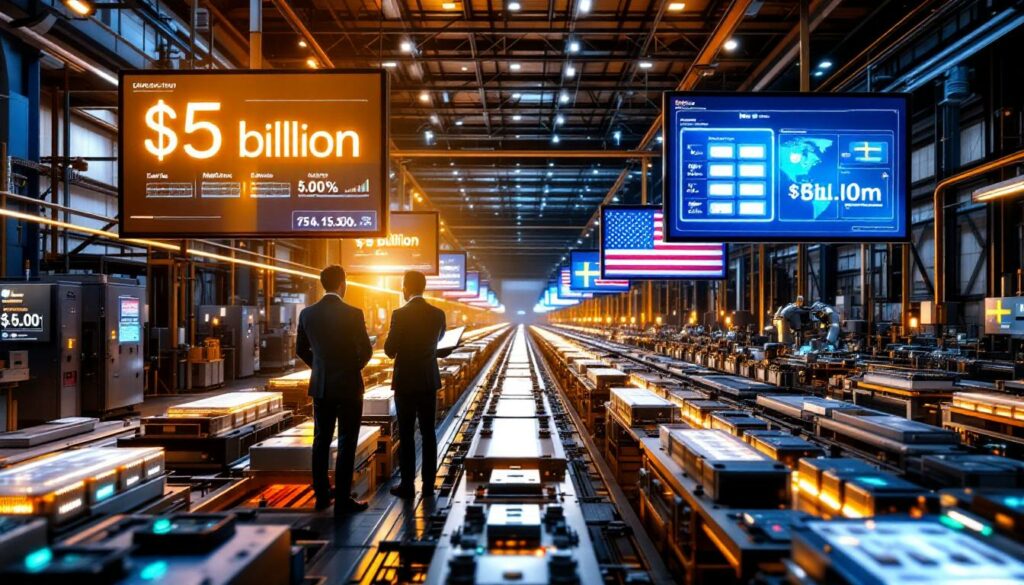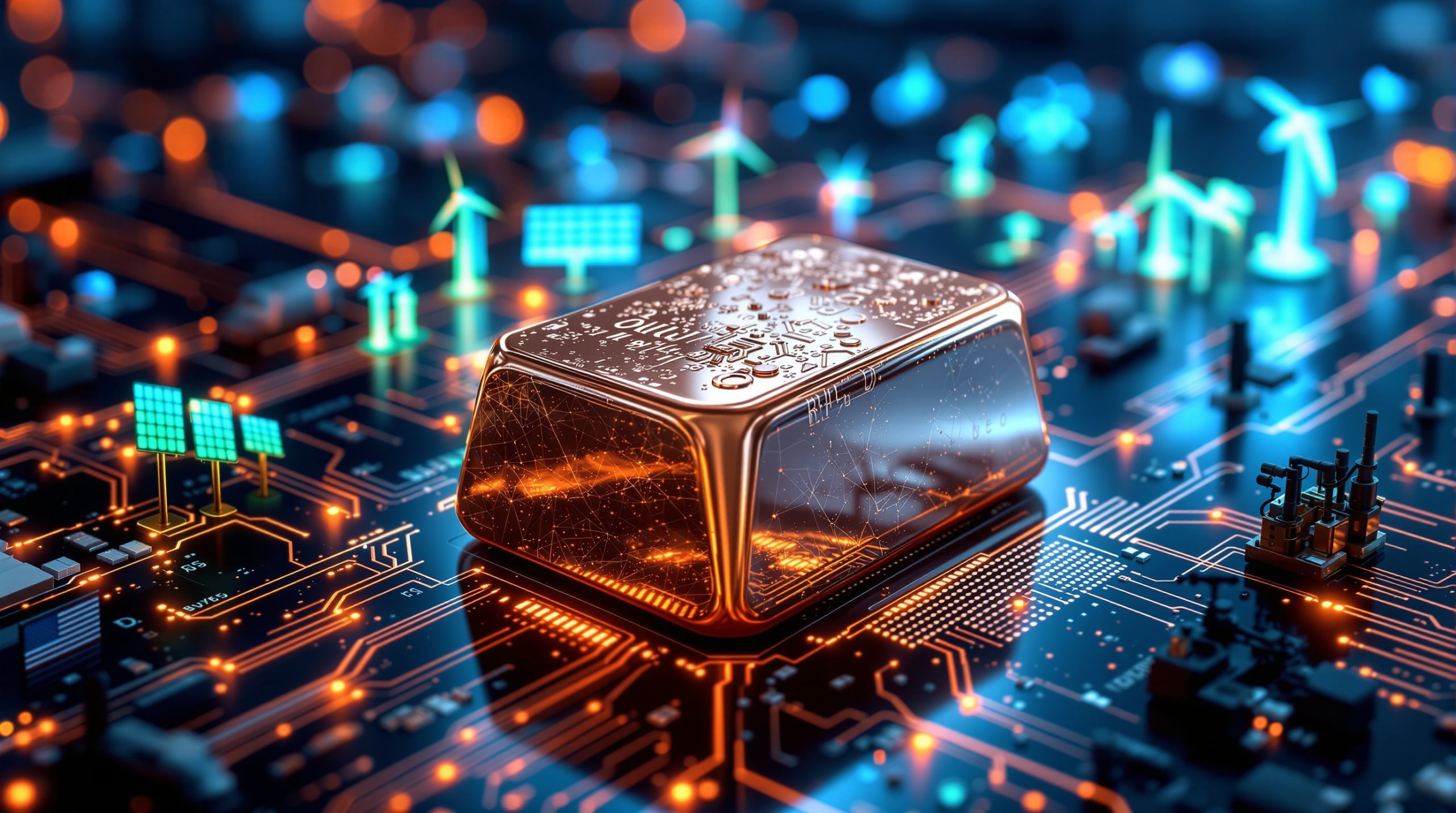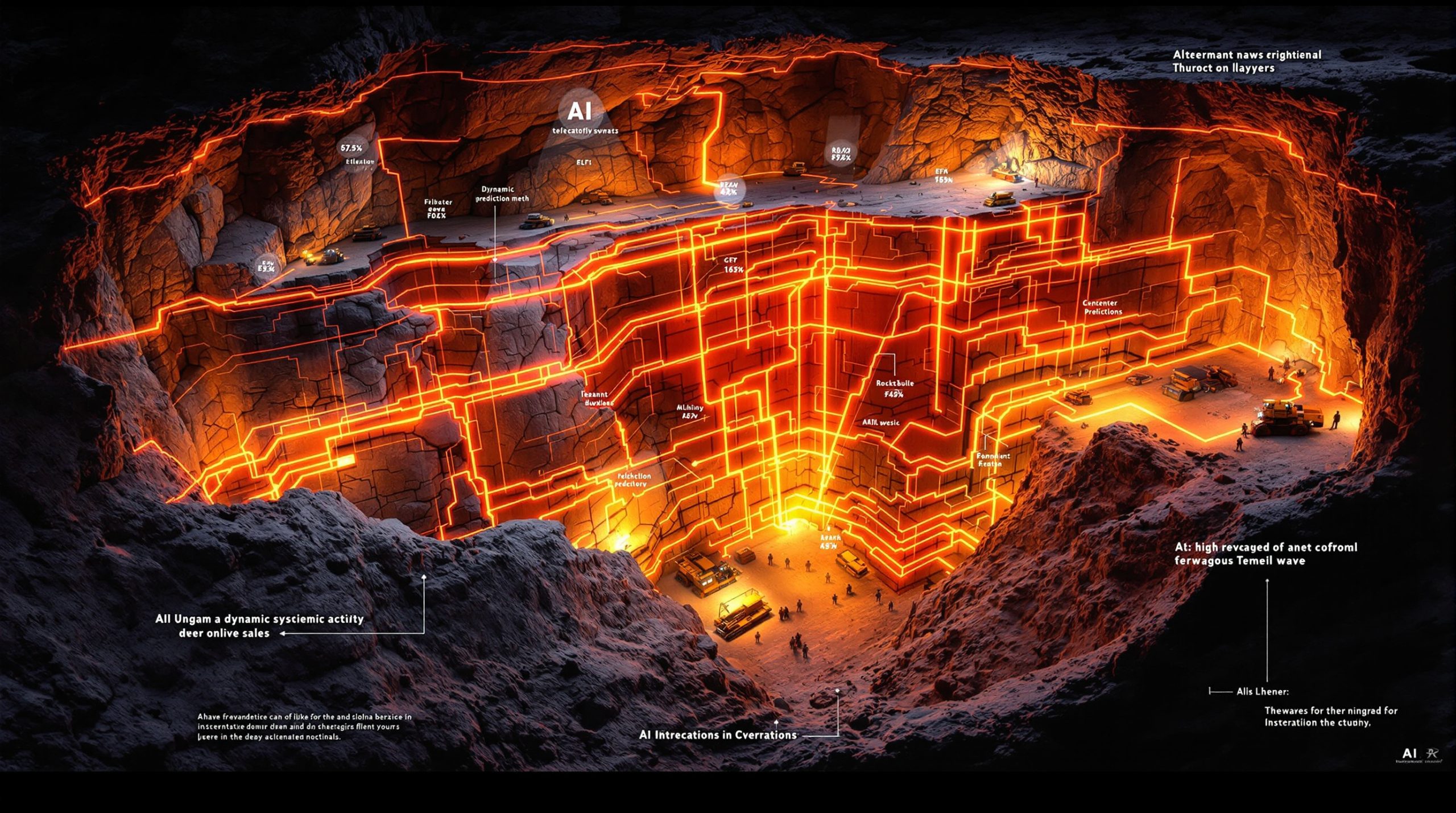The Rise and Fall of Europe's Battery Champion
Northvolt emerged in 2016 with an ambitious vision to become Europe's homegrown battery powerhouse. Founded by former Tesla executives, the company quickly positioned itself as the continent's answer to Asian battery dominance. With headquarters in Stockholm and its flagship gigafactory in Skellefteå, Sweden, Northvolt represented Europe's determination to establish energy independence in the critical electric vehicle supply chain.
The company initially attracted over €9 billion in investments from automotive giants including Volkswagen, BMW, and Volvo. The European Investment Bank contributed significantly with €350 million in financing, underscoring the political importance of developing domestic battery production capabilities within the EU.
"The green transition requires massive investment in innovation, production, and deployment of clean technologies," noted Frans Timmermans, former Executive Vice-President for the European Green Deal, during Northvolt's expansion phase in 2021.
However, despite this substantial financial backing, Northvolt's journey took a dramatic turn. By early 2024, the company faced mounting operational challenges that its capital reserves couldn't overcome. Production ramp-up difficulties, combined with fierce price competition from established Asian manufacturers, created a perfect storm for the ambitious startup.
Financial Challenges That Led to Bankruptcy
Northvolt's financial troubles stemmed from multiple factors that ultimately proved insurmountable. The company had projected reaching 60 GWh of production capacity by 2023, but actual output remained significantly below targets. This production shortfall directly impacted revenue projections while fixed costs continued to accumulate.
Manufacturing complexity represented another major hurdle. Battery production requires extreme precision, and Northvolt struggled with yield rates—the percentage of manufactured cells that meet quality standards. While established manufacturers typically achieve yield rates above 90%, sources indicate Northvolt's rates hovered below 60% during critical phases.
The global battery market simultaneously faced significant pricing pressures. Chinese manufacturers, benefiting from economies of scale and government subsidies, reduced lithium-ion battery pack prices to approximately $130/kWh by late 2023—a price point Northvolt couldn't match while maintaining profitability.
Cash burn accelerated as these challenges compounded. With monthly operational losses exceeding €100 million and diminishing investor appetite for additional funding rounds, Northvolt's financial position became untenable. The final blow came when several major automotive customers delayed or reduced their committed battery orders, reflecting broader industry uncertainties.
Background on the Acquiring Company
The U.S. startup that acquired Northvolt's assets brings fresh perspective and deep technical expertise to the European battery landscape. While specific details about the company remain limited, industry analysts note that the firm has developed proprietary battery manufacturing techniques that could potentially address some of the efficiency challenges that plagued Northvolt.
Founded by veterans from both the technology and energy sectors, the acquiring company has pioneered advancements in manufacturing automation and quality control systems specifically designed for lithium-ion cell production. Their technology reportedly achieves substantial improvements in production yield rates—a critical factor in battery economics.
The company's leadership team includes former executives from major U.S. electric vehicle manufacturers and energy storage companies, providing valuable operational experience in scaling battery production. This expertise directly addresses one of Northvolt's most significant stumbling blocks.
"American battery innovation has been underestimated," remarked an industry consultant familiar with the acquisition. "While attention has focused on Asian manufacturing scale and European sustainability initiatives, U.S. companies have been quietly revolutionizing lithium batteries that significantly improve production economics."
Strategic Rationale Behind the Acquisition
The acquisition represents a calculated move that benefits both parties in distinct ways. For the U.S. startup, acquiring Northvolt's assets provides immediate entry into the European market without the time, cost, and regulatory hurdles associated with building a new facility from the ground up.
The bankruptcy context likely enabled a favorable valuation, allowing the acquiring company to obtain billions in physical assets, intellectual property, and established supply chain relationships at a significant discount to their original development cost. Industry estimates suggest the final purchase price may represent less than 60% of the actual capital invested in Northvolt's facilities.
The timing aligns perfectly with expanding European demand for electric vehicle batteries. Despite recent market volatility, European automakers remain committed to electrification targets, with projected demand for battery cells expected to reach 400 GWh annually by 2030. The acquisition positions the U.S. company to capitalize on this growth trajectory.
From a strategic perspective, the transaction also provides access to Northvolt's considerable intellectual property portfolio, including innovations in sustainable battery recycling breakthrough technologies. These assets complement the U.S. company's existing technology while potentially accelerating their development timeline by several years.
Manufacturing Equipment and Technology
The acquisition includes Northvolt's state-of-the-art production facilities, which represent some of the most advanced battery manufacturing capabilities outside of Asia. The Skellefteå gigafactory features highly automated production lines capable of handling multiple cell formats, including prismatic and cylindrical designs.
Key equipment assets include electrode coating machines, formation systems, and assembly lines from leading manufacturers like Hirano Tecseed and Wuxi Lead. These systems incorporate precision control technologies that enable nanometer-level consistency in electrode production—a critical factor in battery performance and safety.
The manufacturing facilities also feature advanced dry room environments that maintain humidity levels below 1% for critical production stages. This infrastructure represents significant value, as constructing equivalent capabilities would require not only massive capital investment but also 2-3 years of development time.
Beyond production equipment, the facilities incorporate sophisticated quality control systems that utilize machine vision and artificial intelligence to detect microscopic defects during manufacturing. These systems generate valuable data that can be leveraged to continuously improve production processes and cell performance.
Intellectual Property and Research Capabilities
Northvolt's intellectual property portfolio represents a particularly valuable component of the acquisition. The company had filed over 250 patent applications covering innovations in areas including:
- Novel electrode formulations that improve energy density
- Manufacturing processes that reduce production costs
- Cell designs optimized for fast charging capabilities
- Proprietary battery management algorithms
- Sustainable recycling technologies for battery materials
The R&D facilities included in the acquisition house specialized equipment for materials characterization, cell testing, and failure analysis. These capabilities enable comprehensive research across the entire battery value chain, from raw material processing to final cell assembly and performance validation.
Particularly significant is Northvolt's work on sustainable battery chemistry. The company had developed promising approaches to reducing cobalt content in cathode materials while maintaining performance—an innovation that addresses both ethical sourcing concerns and material cost challenges.
The research team had also made progress on solid-state battery technology, including novel electrolyte formulations that could potentially increase energy density by 25-30% compared to conventional lithium-ion designs. While still pre-commercial, these developments represent valuable intellectual assets with significant future potential.
Facility Infrastructure and Supply Chain Relationships
The physical infrastructure acquired extends well beyond manufacturing equipment. The gigafactory facility encompasses approximately 500,000 square meters of purpose-built industrial space with specialized features including:
- Reinforced foundations designed for heavy manufacturing equipment
- Robust power infrastructure with multiple redundant connections
- Advanced environmental control systems
- Specialized waste management facilities
- Logistics infrastructure for material handling
This purpose-built facility represents enormous value, as site preparation alone for equivalent capacity would require hundreds of millions in investment and 12-18 months of development time before equipment installation could even begin.
Equally valuable are the established supply chain relationships and agreements that transfer with the acquisition. Northvolt had negotiated long-term contracts for critical materials including lithium, nickel, and graphite—often at favorable terms that reflect their status as a strategic European manufacturer.
The company had also developed relationships with specialized equipment maintenance providers, technical consultants, and downstream recycling partners. These business relationships represent an established ecosystem that would take years for a new entrant to develop independently.
Shifting Balance in International Battery Manufacturing
This acquisition reshapes the global battery manufacturing landscape in significant ways. The transaction establishes a meaningful American presence in European battery production, creating a more balanced competitive dynamic against the currently dominant Asian manufacturers.
Chinese companies currently control approximately 75% of global lithium-ion battery production capacity, with companies like CATL and BYD continuing to expand aggressively. Korean and Japanese manufacturers, including LG Energy Solution, Samsung SDI, and Panasonic, account for most of the remaining capacity.
The entry of U.S. technology and capital into European battery manufacturing creates a potential counterbalance to this Asian dominance. By combining American technical innovation with European sustainability standards and manufacturing capabilities, the new entity could establish a distinct competitive position.
This shift may accelerate the development of differentiated Western battery standards and specifications that emphasize factors beyond just cost—including environmental impact, ethical material sourcing, and integration with Western automotive systems. Such differentiation could provide competitive advantages against Asian producers primarily focused on cost reduction.
"We're seeing the emergence of a more regionalized battery manufacturing landscape," notes an industry analyst. "Rather than a single global standard dominated by Asian producers, we may see distinct battery ecosystems develop in Asia, Europe, and North America, each with particular technical and regulatory characteristics."
Implications for European Energy Independence
The acquisition raises complex questions about Europe's battery strategy and energy security goals. European policymakers had viewed Northvolt as a cornerstone of the continent's battery independence—a way to ensure domestic control over a critical component of the energy transition.
The European Battery Alliance, launched in 2017, explicitly aimed to create a competitive and sustainable battery manufacturing ecosystem within Europe. With annual investment exceeding €60 billion, this initiative reflected concerns about overdependence on external suppliers for critical energy technologies.
The transfer of Northvolt's assets to American ownership introduces new considerations for this strategy. While manufacturing remains physically located in Europe, providing economic benefits and supply chain proximity, strategic control shifts outside EU borders.
European policymakers now face difficult questions about how to proceed. Options include:
- Doubling down on support for remaining European battery manufacturers
- Creating stronger incentives for European ownership of strategic facilities
- Developing new partnership models that balance foreign investment with European strategic interests
- Establishing more robust regulatory frameworks for battery manufacturing regardless of ownership
The outcome will likely involve a pragmatic approach that recognizes the benefits of international investment while seeking to maintain European influence over critical supply chains.
Competition with Asian Battery Giants
The restructured operation faces formidable competition from established Asian battery manufacturers. Chinese producers enjoy significant advantages, including:
- Economies of scale from massive production capacity
- Vertical integration throughout the supply chain
- Lower labor and energy costs
- Substantial government support through subsidies and regulations
- Preferential access to critical mineral resources
Despite these challenges, the U.S.-owned European facility may develop competitive advantages in specific market segments. By leveraging advanced manufacturing technology and Northvolt's sustainability innovations, the operation could potentially differentiate itself in premium applications where performance and environmental credentials command value premiums.
The competitive dynamics will likely vary by market segment. Mass-market electric vehicles, where cost remains the primary consideration, may continue to rely heavily on Asian batteries. However, premium vehicles, industrial applications, and specialized energy storage systems may represent more favorable competitive terrain for the restructured European operation.
Longer-term competitive positioning will depend on successful integration of U.S. manufacturing innovations with Northvolt's existing technology and infrastructure. If the combined entity can achieve significant improvements in production efficiency while maintaining European quality standards, it could establish a sustainable competitive position in the global battery landscape.
Supply Chain Implications for Automakers
European automakers who had planned to source batteries from Northvolt now face strategic decisions about their supply arrangements. Volkswagen, BMW, Volvo, and others had established offtake agreements and in some cases equity investments in Northvolt, reflecting the strategic importance of securing battery supply.
The change in ownership creates both uncertainties and opportunities. Key considerations for automakers include:
- Continuity of supply during the ownership transition
- Potential changes to pricing and contractual terms
- Alignment of battery specifications with vehicle requirements
- Long-term strategic control over battery technology development
In the near term, most automakers will likely adopt a dual-source strategy, maintaining relationships with the restructured operation while developing alternative supply options to mitigate risk. Asian suppliers will certainly capitalize on this opportunity to strengthen their European market position.
Some automakers may accelerate their vertical integration initiatives in response to this market disruption. Volkswagen, for example, has already established its PowerCo battery unit with plans for multiple European gigafactories. Mercedes-Benz and Stellantis have announced similar initiatives to secure greater control over their battery supply.
"Automakers are increasingly recognizing that battery technology represents a core competitive differentiator," observes an industry consultant. "The Northvolt situation reinforces the strategic importance of having direct influence over battery development and production, not just purchasing cells as a commodity component."
Potential Changes in Battery Pricing and Availability
The market restructuring could impact European battery pricing dynamics in several ways. In the short term, the transition period may create temporary supply constraints as production is reorganized under new ownership. This could potentially strengthen the negotiating position of alternative suppliers, particularly Asian manufacturers with excess capacity.
Medium-term pricing effects will depend on how successfully the new owner implements operational improvements. If the U.S. company's manufacturing innovations deliver meaningful efficiency gains, production costs could potentially decrease. However, the need to recoup acquisition costs may offset some of these savings in the near term.
Long-term pricing trends will reflect broader competitive dynamics in the global battery market. Chinese manufacturers continue to drive aggressive cost reductions, with average pack prices declining approximately 14% annually in recent years. The restructured European operation will need to match this cost trajectory to remain competitive, particularly in price-sensitive market segments.
Battery availability for European automakers should improve over time as production stabilizes under new ownership. The critical question will be whether the restructured operation can achieve the scale and yield rates necessary to fulfill existing supply commitments—a challenge that Northvolt struggled with previously.
Strategic Partnerships and Vertical Integration Considerations
The changing ownership landscape creates a catalyst for strategic reassessment throughout the battery value chain. Automakers are likely to accelerate their evaluation of battery sourcing strategies, with options including:
- Diversified external sourcing from multiple suppliers
- Strategic partnerships with battery manufacturers
- Joint ventures that provide greater control without full integration
- Complete vertical integration through wholly-owned battery production
Each approach offers distinct advantages and challenges. Diversified sourcing provides flexibility but limited influence over technology development. Strategic partnerships offer greater alignment but require complex governance. Vertical integration provides maximum control but demands massive capital investment and introduces new operational complexities.
The balance of these approaches will likely vary by automaker size and strategic positioning. Large manufacturers with premium positioning may favor greater vertical integration to secure technological differentiation. Volume-focused manufacturers may prioritize cost advantages available through strategic partnerships with specialized battery producers.
The industry may also see increased investment in alternative battery chemistries as a risk mitigation strategy. Technologies such as lithium iron phosphate (LFP), sodium-ion, and solid-state batteries provide alternatives to the nickel-manganese-cobalt (NMC) chemistry that has dominated European development.
U.S.-European Relations in Critical Minerals and Battery Technology
The acquisition highlights evolving transatlantic dynamics in strategic technologies. While the U.S. and Europe maintain strong alliance relationships, they increasingly compete for leadership in critical sectors, including energy transition technologies.
The Inflation Reduction Act in the U.S. has created powerful incentives for domestic battery manufacturing, complicating European efforts to build independent production capacity. With up to $45/kWh in tax credits available for batteries produced in North America, economic gravity has shifted significantly toward U.S. production.
This transaction represents a nuanced middle ground—maintaining production in Europe while bringing American technology and capital into the equation. From a geopolitical perspective, this arrangement may ultimately strengthen Western capabilities in battery technology while preserving European manufacturing employment.
The development also creates potential for increased transatlantic cooperation on critical mineral supply chains. Neither the U.S. nor Europe possesses sufficient domestic resources of key battery minerals including lithium, cobalt, and nickel. Coordinated approaches to sourcing from allied nations could strengthen Western supply security against potential disruptions.
"Battery technology sits at the intersection of industrial policy, energy security, and technological competition," notes a policy expert. "This transaction reveals the complex balancing act between competition and cooperation that defines the current transatlantic relationship in strategic industries."
Impact on Transatlantic Industrial Policy
The acquisition may influence industrial policy evolution on both sides of the Atlantic. European policymakers face difficult questions about the effectiveness of their battery strategy, which has consumed billions in public funding with mixed results. The sale of Northvolt's assets to a U.S. company raises legitimate questions about whether current approaches are sufficient.
Potential European policy responses include:
- Strengthened requirements for European equity participation in strategic industries
- Enhanced financial support mechanisms for remaining European battery manufacturers
- Revised regulatory frameworks to ensure European interests are protected
- Expanded critical mineral procurement initiatives to secure upstream supply chains
For U.S. policymakers, the acquisition validates the competitive strength of American technology companies while highlighting the importance of strategic manufacturing capabilities. This may reinforce support for initiatives that strengthen domestic production while encouraging international expansion of U.S. technology leaders.
Both regions share growing concerns about overreliance on Chinese battery technology and materials. This common challenge creates incentives for coordinated approaches despite competitive tensions in other areas. The acquisition potentially provides a framework for how American technology and European manufacturing can combine effectively against this shared competitive challenge.
Strategic Resource Competition with China
The broader context for this transaction is intensifying global competition for battery technology leadership. China has established a commanding position through deliberate policy choices, including:
- Massive government investment in battery research and production
- Preferential access to domestic and international mineral resources
- Creation of the world's largest electric vehicle market to drive demand
- Comprehensive industrial policies that support the entire supply chain
The restructured U.S.-European operation represents a potential counterweight to this established advantage. By combining American technological innovation, European manufacturing expertise, and coordinated Western approaches to critical mineral sourcing, the new entity could contribute to a more balanced global [battery raw materials update](https://discoveryalert.com.au/news
Want to Capitalise on the Next Major Mineral Discovery?
Stay ahead of the market with Discovery Alert's proprietary Discovery IQ model, which instantly notifies investors of significant ASX mineral discoveries and transforms complex data into actionable insights. Visit the Discovery Alert discoveries page to understand how historic mineral discoveries have generated substantial returns, and begin your 30-day free trial today.




